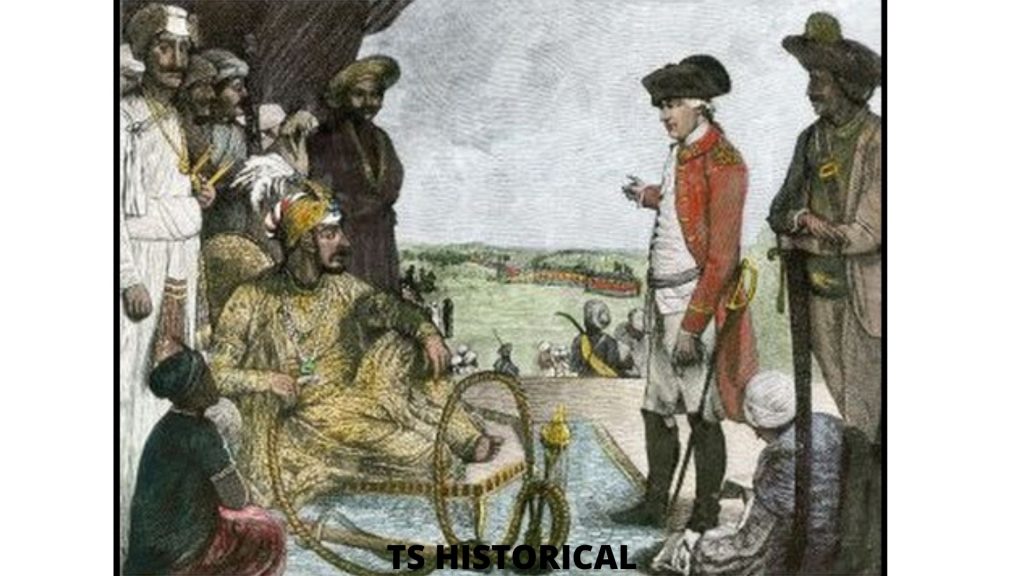Table of Content
Anglo-Mughal War, British Apologized for Child War

The British stepped into India under the guise of traders and with the help of traitors, they captured the whole of India, following their most dangerous policy, divide and rule, and occupied the whole of India. But few people know that before winning over Nawab Sirajuddin-Dola and Tipu Sultan, East India Company also tried to attack Aurangzeb Alamgir but in this battle, he suffered a heavy defeat and was defeated by Aurangzeb Alamgir. Had to apologize with tied hands in court. In history, the battle between Aurangzeb Alamgir and the East India Company is known as the Anglo Mughal War which lasted from 1686 to 1690.
Anglo War History

Anglo Mughal war also know as Child’s War The History of this war is that the British established a company and started trading in India. In order to give him some concessions in trade, the Mughal authorities granted tax exemptions to the British, on this request, the French and the Portuguese also received tax When the news reached the company’s headquarters in London, they were granted exemptions for their trade. It arrived, and the angry East India Company chief Jozaya Child’s struggle did not stop.
He did not want anyone else to share in his profits. He asked the officers of the Company based in India to cut and plunder the passage of Mughal ships in the Arabian Sea and the Bay of Bengal. Historians see any ship that commanded it as foolhardy for daring to wage war against the world’s most powerful and richest kingdom with only a few warriors. Aurangzeb Alamgir was the ruler of India at that time. Some historians are trying to defame Aurangzeb Alamgir by spreading fake information.
Download this Article in PDF Format
Get a well-documented version of this article for offline reading or archiving.
Download Now (736 KB)However, history shows that he was a brave, kind, and just monarch, and even moderate English historians agree. During the reign of Aurangzeb Alamgir, a quarter of the world’s GDP was produced in India. It was in practically the same economic condition as it is in the United States of America today.
The frontier of the empire was spread over 4 million square kilometers, and the Mughal army numbered more than 9 lakh soldiers. Aurangzeb’s soldiers had fought so many rebels and opponents that they could face any army in the world at this time. On the orders of Jozia Child, East India Company soldiers stationed in Bombay plundered three Mughal ships.
Aurangzeb Alamgir’s attack on East India Company

Anglo-Mughal War: In retaliation, Mughal Admiral Sidi Yakut laid siege to Bombay with the support of a formidable navy. The British fled to a fort for commercial purposes as a safe haven. The Sidi Yakuts had the option of attacking and capturing the fort but preferred to open it from afar. The governor of Bengal besieged the East India Company’s fort at Hooghly and blocked all access roads, leading to a similar situation on the eastern side.
The British learned that they were facing death, so they sent two of their ambassadors to Aurangzeb’s court to negotiate the terms of defeat. In 1690 AD, after months of unsuccessful attempts, he gained entry into the court of Aurangzeb Alamgir, the last powerful Mughal emperor. The white-bearded king reprimanded them before asking what they wanted. Both first complained, then confessed and apologized for the atrocities committed by the East India Company.
The benevolent king not only pardoned them by demanding a war fine but also restored all their trading privileges according to history. The British returned to Bombay and gave Aurangzeb’s letter to the Sidi Yakut. Then the siege was lifted and the British were pardoned. Historians agree that if Aurangzeb had not forgiven the British and removed them from India, the history of India would have been different today.
Discover more from TS HISTORICAL
Subscribe to get the latest posts sent to your email.

